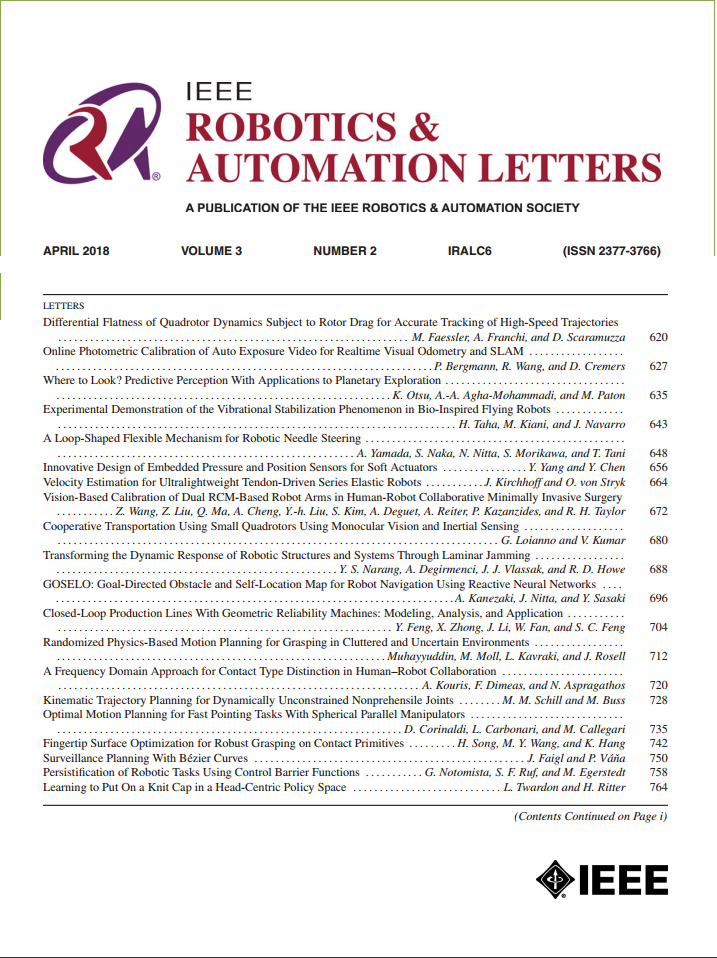Agile Plane Transition of a Hexapod Climbing Robot
IF 4.6
2区 计算机科学
Q2 ROBOTICS
引用次数: 0
Abstract
Traversing across adjacent planes is an important ability for legged climbing robots. While many robots can achieve autonomous ground-to-wall transitions, most are limited to scenarios where the angle between the planes has a certain value. In some cases, however, the robot needs to traverse planes with a wide variety of angles. To enhance the adaptability of the robot in such diverse scenarios, we analyze the plane transition process and propose a universal methodology for hexapod climbing robots with a two-stage workflow. In the first stage, we plan a trajectory of body without considering configuration of legs, within a reachable map. This low-dimensional map can be efficiently sampled and explored to identify feasible transitions. In the second stage, we use a motion prediction to generate landing points, as well as swing and stance trajectories for each leg. By tracking these trajectories, the robot can autonomously transition from one plane to another. Guided by this methodology, we design a hexapod climbing robot capable of autonomously traversing planes with angles ranging from 30° to 270°. For further validation, we build the physical prototype of the robot and conduct a series of plane transition experiments. The results demonstrate the feasibility of both our methodology and the robot.六足爬行机器人的敏捷平面过渡
穿越相邻平面是腿式攀爬机器人的一项重要能力。虽然许多机器人可以实现从地到墙的自动过渡,但大多数机器人仅限于平面之间的角度具有一定值的场景。然而,在某些情况下,机器人需要以各种角度穿越平面。为了提高机器人在多种场景下的适应性,我们分析了六足爬行机器人的平面过渡过程,并提出了一种具有两阶段工作流程的六足爬行机器人通用方法。在第一阶段,我们在一个可达的地图中,不考虑腿的配置,规划身体的轨迹。这种低维地图可以有效地采样和探索,以确定可行的过渡。在第二阶段,我们使用运动预测来生成着陆点,以及每条腿的摆动和站立轨迹。通过跟踪这些轨迹,机器人可以自主地从一个平面过渡到另一个平面。在这种方法的指导下,我们设计了一个六足爬行机器人,能够自主穿越30°到270°的角度范围内的平面。为了进一步验证,我们建立了机器人的物理原型,并进行了一系列的平面过渡实验。结果证明了我们的方法和机器人的可行性。
本文章由计算机程序翻译,如有差异,请以英文原文为准。
求助全文
约1分钟内获得全文
求助全文
来源期刊

IEEE Robotics and Automation Letters
Computer Science-Computer Science Applications
CiteScore
9.60
自引率
15.40%
发文量
1428
期刊介绍:
The scope of this journal is to publish peer-reviewed articles that provide a timely and concise account of innovative research ideas and application results, reporting significant theoretical findings and application case studies in areas of robotics and automation.
 求助内容:
求助内容: 应助结果提醒方式:
应助结果提醒方式:


